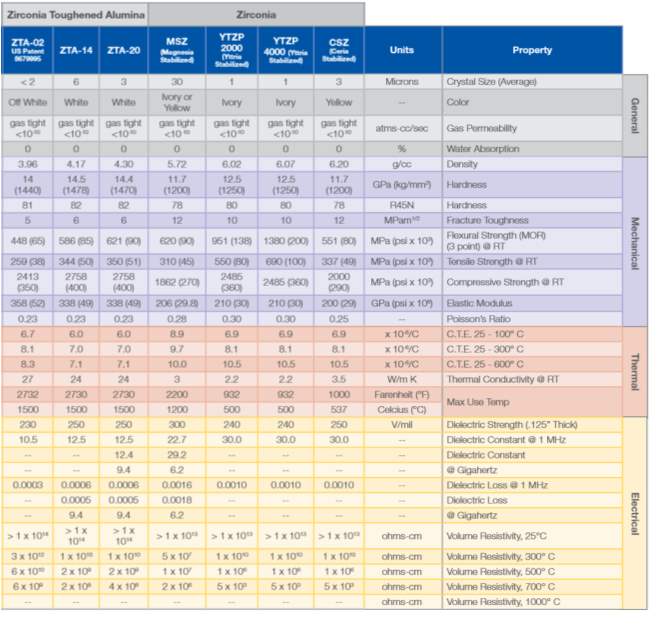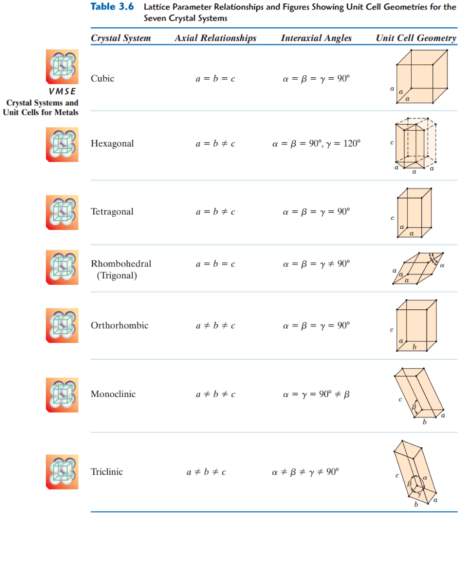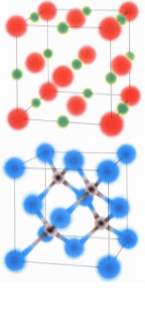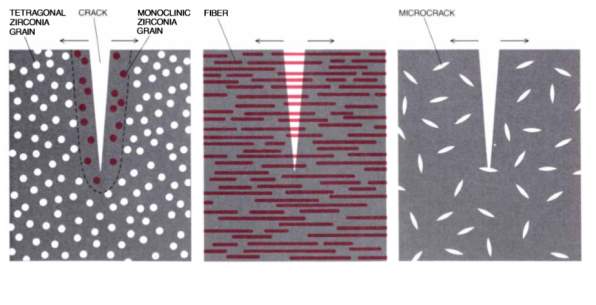Material’s Need
Dental health is very important in order to maintain a healthy lifestyle. Issues with bacteria in the mouth due to cavities and other infections or ailments have been linked to severe long-term illnesses such as Alzheimer’s (Dominy, Stephen). “…a condition such as gingivitis, which is an inflammation of the gingival complex, will cause sensitivity, swelling and pain in the gums. If left untreated, it will begin to affect the underlying bone and can eventually cause the teeth to loosen, a condition known as periodontitis [6]. Conditions such as the two aforementioned are common, and the percentage of population with decayed or missing teeth is particularly high…” (Grech, Johnathan).
Solutions to these oral ailments include dental implants, which commonly use metals like titanium. Titanium is a biocompatible metal however it does not operate in concert aesthetically with the color palette of the mouth. Additionally, the immunocompromised and those with titanium allergies are not always able to use titanium and require cost effective and safe alternatives. A safe alternative solution to the tantalizing titanium topic is the use of zirconia-based ceramics for dental implants. The ceramic is much closer to the actual color of teeth; not to mention “…their superior strength and fracture toughness when compared to metallic alternatives such as pure titanium…”(Grech, Jonathan).
Industries around the world continue to find solutions to an ever-expanding list of problems, the catch being that once a solution is found, it is sometimes difficult to improve upon it. In the case of the dental industry, the long-standing solution to dental problems that require implants is to use titanium alloys. Titanium alloys have been enormously successful as the implant material of choice for patients whose conditions require it; and the procedural results can last throughout the life of the patient. The manufacturing process for the material begins with “zirconia” - a zirconium oxide ceramic, doped with yttria- which will be discussed in more detail in the following sections. While it would be incorrect to simply state that using zirconia is undoubtedly an improvement in every case, it is an option that garners some consideration, since there are cases where titanium isn’t a viable option. On the sparse chance that an individual has an allergy to nickel -a component in titanium alloy implants- the patient would experience untoward effects from the procedure. Patients with auto-immune diseases are at further risk of health complications due to the inability to counter the dispersion of titanium throughout the body. Another potential complication arises from galvanic toxicity which occurs when a metal reacts with the enzymes in saliva and can cause a metallic taste in the mouth or even chronic insomnia (Baylin, Michael)
Specific Material in mind

Yttria stabilized zirconia is the particular ceramic of focus due to its unique properties. These properties make it an ideal orthodontal prosthetic. One company lists the material properties of their particular ‘flavor’[manufactured version] of the material. The data for which is displayed in table 1. As can be seen in columns three and four, the materials’ colors are listed as ‘Ivory’. Additionally, the compressive strength of the ‘YZTP 4000 & 2000 Yttria Stabilized Zirconia’ is among the highest of the above listed at about 2485 MPa (where 1 Megapascal = 103 Pa). This is yet another reason to use it as a dental implant due to the magnitude of masticatory forces.
Atomic Bonding and structure of specific material

Ceramics typically have ionocovalent bonding, which gives them the myriad of properties that separate them from other compounds such as metallic compounds for example. The ionic bonds in ceramics have high bond energies, require large differences in electronegativity between the atoms, and are non-directional in nature. While the covalent bonds in ceramics have high bond energies, small to no differences in electronegativity, and directional bonding. These two bonding types working in concert are what contribute to the properties of ceramics such as toughness, hardness, brittleness, and resistance to wear & decomposition due to stability of the chemical structure. Of the two, since zirconium has an electronegativity of about 1.3 Pauling Units and Oxygen has an electronegativity value of about 3.4 Pauling units, the electronegativity difference between the two is enough to determine that the atomic bonding of zirconia is predominantly ionic (Callister, William D.). The seven crystal lattice system groups stemming from the 14 Bravais lattices include: Cubic, Hexagonal, Tetragonal, Rhombohedral, Orthorhombic, Monoclinic, and Triclinic (Callister, William D.). Of these seven, the most commonly found is intuitively going to be closest to room temperature [outside temperature] because most [uncontrolled] reactions are going to veer towards room temperature; according to figure 2, this is the monoclinic structure. For dental applications, however, the tetragonal structure is the most effective because of the unique property of stress induced transformation toughening. This allows for the implant to be cracked and damaged, because the more dense tetragonal structure will break and cause the structure surrounding the crack to form a less dense monoclinic structure and halt the crack propagation(Superior Technical Ceramics, & Caster, William D.).

Depicted in figure 1 is the demonstration of the above discussed “BONDING IN CERAMICS[which] is both ionic (top) and covalent (bottom). In ionic bonding electrons are transferred from an atom to a neighboring one. The donor atom thereby becomes positively charged and the acceptor atom becomes negatively charged. The electrostatic force between the atoms keeps the atoms in place. In covalent bonding electrons are shared more or less equally between neighboring atoms. Unlike ionic bonds, covalent bonds (represented here by visible connections between atoms) tend to be highly directional and resist the sliding of planes of atoms past one another. The diagrams are idealized cases. An actual ceramic has a hybrid of the two bonds among its constituent atoms” (Bowen, Kent H.).
Phase Diagram of selected material

Phase diagrams for materials [specifically metals] typically will depict the eutectic -liquid to 2 solid phases-, eutectoid -solid to 2 solid phases- , peritectic -liquid + 1 solid phase to another solid phase-, and peritectoid -2 solid phases to 1 solid phase- reactions; however, this one is more useful for understanding the atomic structures of the material and the temperatures at which the desired tetragonal phase forms. An example that shows the melting point and liquid phase can be seen in figure 3. As previously mentioned, the tetragonal structure is the one of interest. This phase is most reliably present at approximately 1200 C and 1.5 % moles of YO1.5 (Witz, Gregorie).

Figure 3 depicts Yittrium Tantalate phase diagram with zirconia with particular structures, phases, and temperatures clearly labeled as well as the rough percentage of ZrO2 moles present. It should be noted that this is a different material that zirconia is being doped with, and it will have slightly different physical properties because of this [hence the difference in melting temperature].
Predict Microstructure, strengthening mechanisms, and mechanical properties

The manufacturing process for “Yttria-stabilized zirconia (YSZ)…” begins with the specimen “…produced as a tetragonal metastable polymorph containing around 7%–8% weight of yttria” which can be varied to obtain the desired microstructure (Witz,Gregoire). For dental applications, a tetragonal and monoclinic structure is desired so that the stress induced transformation toughening property can be exhibited by the material. To achieve these structures, it is “…shown in Fig. 1[The phase diagram labeled figure 2], [that] other polymorphs of YSZ can be obtained by varying the yttria content. YSZ is stabilized into its cubic form by a high yttria content; monoclinic YSZ, on the other hand, forms with low yttria contents. The monoclinic polymorph is stable only at low temperatures and undergoes a martensitic transformation to a tetragonal phase around 1000 [degrees Celsius]. The monoclinic-to-tetragonal transformation causes a volume change in the unit cell by about 4%, which can result in cracking and coating failure” (Witz, Gregoire).
The aforementioned transformation is the ‘stress induced transformation toughening’ discussed above which is the unique property that makes this material ideal for dental applications. This occurs in materials that have tetragonal and monoclinic structure. It allows for “a crack in a ceramic [to be] arrested…” which is a benefit of “new processing techniques that seek to eliminate crack-initiating imperfections. Transformation toughening (left[of figure 4]) relies on a change in crystal structure (from tetragonal to monoclinic) that zirconia, or zirconium dioxide (ZrO,), grains undergo when they are subjected to stresses at a crack tip. Because the monoclinic grains have a slightly larger volume, they can "squeeze" a crack shut as they expand in the course of transformation. Ceramics can also be made crack-resistant by interlacing with fine ceramic fibers (middle), as is the case in composite materials. The fibers span a crack and keep it from becoming wider and growing. A third way to stop a crack is by spreading the stresses concentrated at its tip over a larger surface. This can be accomplished if minute cracks, called microcracks (right), are purposely created in the ceramic material during processing. When an approaching crack merges with a micro crack, its tip is blunted”(Bowen, Kent H.).
Doping is the act of adding impurities to ceramics in order to change their material properties. This can be very easily seen from the stark differences in the phase diagrams depicted as figure 2 and figure 3. The difference in structure and the difference in the melting point temperature is a direct result of doping the Zirconia with Yttria vs with Y0.5Ta0.5O2 (Gurak, Mary & Witz, Gregoire).Mechanically Speaking, as depicted in table 1, the properties of Yttria stabilized Zirconia -or Zirconia ‘doped’ with Yttria- such as toughness, hardness, brittleness, resistance to wear & decomposition, and thermal/electrical insulation are all directly a result of the bonds and structure.
Estimated Impact on Society, including globally, economically, and environmentally, as well as occupational safety.
Introduction of foreign materials into osseous tissue has caused issues within the human body since the dawn of prosthetic development. From peg-legged pirates to myoelectric arms that gyrate, the human body is a minefield of unexpected problems stemming from even the most seemingly insignificant incompatibilities. However, the task of tackling the requirements for effective biomedical prostheses is worth the hassle because of all the possibilities the solutions offer. Dental health among the most important to upkeep because the ramifications of neglecting it can cause severe illnesses as mentioned in the ‘Materials’ Need’ section. With the integration of dental prosthetics, and the struggles that maxillofacial surgeons and dentists face, a material that will allow bone to grow onto it and diffuse into it was much needed. The main issue with the conundrum being that the material must also be biocompatible. This is where zirconia based ceramics shine [like pearly whites]. In a study conducted to test the “Bone Response to Zirconia Ceramic Implants: An Experimental Study in Rabbits”, scientists discovered that “A great quantity of newly formed bone was observed in close contact with zirconia ceramic surfaces; in some areas, many osteoblasts were present directly on the zirconia. Percentage of boneimplant contact was 68.4% 6 2.4%. Mature bone, with few marrow spaces, was present. Small actively secreting osteoblasts were present in the most coronal and apical portions of the implant. No inflamed or multinucleated cells were present. This study concluded that these implants are highly biocompatible and osteoconductive” (Scarano, Antonio). This means that the implants were successful in regenerating at least enough osseous tissue to form a secure bond between the prosthetic and the patient; such prosthetics only help aid individuals to perform more efficiently and to mesh more effectively in society, and can only positively impact such a society. Globally, zirconia is not a scarce element and can be found even in the United States; additionally, it has a stable structure that does not degrade into unstable or harmful elements but instead remains effectively chemically inert indefinitely which mitigates its environmental impact (Burke, Joseph E.). In regard to occupational safety, the medical field in the United States is so heavily regulated and highly maintained that the only occupational hazards that is related to such a material stems from any flaw in the medical procedure itself. With all of these in consideration, Zirconia stabilized by doping with Yttria and raising to approximately 1200 C with 2.5-3% molar weight YO1.5 produces the tetragonal structure which benefits from stress induced transformation toughening and is a sufficiently biocompatible material to be used as an excellent dental prosthetic.
References
- Dominy, Stephen S. “Porphyromonas Gingivalis in Alzheimer’s Disease Brains: Evidence for Disease Causation and Treatment with Small-Molecule Inhibitors.” American Association for the Advancement of Science, 2019.
- Grech, Jonathan. “Zirconia in dental prosthetics: a literature review” College of Science and Engineering, James Cook University, Townsville, QLD 4811, Australia, 2019
- Superior Technical Ceramics “Transformation Toughening of YTZP How it Resists Crack Propagation” Superior Technical Ceramics 2018
- Superior Technical Ceramics “What is low Temperature Degradation and how does it affect the properties of YZTP” Superior Technical Ceramics 2018
- Superior Technical Ceramics “Materials Property Chart” Superior Technical Ceramics 2018
- Scarano, Antonio et al. “Bone Response to Zirconia Ceramic Implants: An Experimental Study in Rabbits” Ministry of Education University and research (MIUR), Rome, Italy. 2019
- Burke, Joseph E. “Ceramics Today: Ceramics made from pure substances may be controlled to have a variety of useful properties” American Association for the Advancement of Science., Vol 161, Number 3847, 20th September 1968
- Bowen, Kent H. “Advanced Ceramics: These nonmetallic, nonpolymeric materials are hard, resist heat and chemicals and can be designed to have special electrical properties. Research Focuses on a major shortcoming: a tendency to crack easily” Scientific American, A division of Nature America Inc. Vol 255, Number 4, pp 168-177, October 1986
- Witz, Gregoire “Phase Evolution in Yttria-Stabilized Zirconia Thermal Barrier Coatings Studied by Rietveld Refinement of X-Ray Powder Diffraction Patterns” Journal of the American Ceramic Society September 2007
- Baylin, Michael. “Dental Implants; An Integrative Perspective” 2012.
- Gurak, Mary “On the Yttrium Tantalate – Zirconia Phase Diagram” Journal of the European Ceramic Society March 2019
- Callister, William D. “Fundamentals of Materials Science and Engineering: An Integrated Approach 4th edition” John Wiley & Sons, Inc. 2012
Cite This Work
To export a reference to this article please select a referencing style below:
Related Content
All TagsContent relating to: "prosthetics"
The term “Prosthesis” can be defined as an artificial replica that replaces human damaged or lost body part. Prostheses are usually made for human main joints such as hip, knee, elbow, shoulder, wrist etc, they are also used in dentistry.
Related Articles


